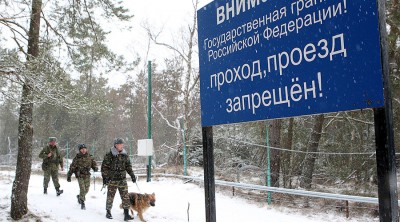Building An “Anti-Aggressor Fence” on Russia’s Border
‘We’ll Supply Bricks,’ Russia Tells Lithuania on Plans to Build ‘Anti-Aggressor’ Fence at Border

News about the proposed fence on the border with Kaliningrad, a Russian exclave located between Poland and Lithuania, emerged in Lithuanian media on Saturday.
“The fence is like a sign that [Lithuania] views the neighboring country as a potential aggressor,” Interior Minister Eimutis Misiunas said, as cited by Lietuvos zinios newspaper.
According to the minister, the fence will cost some €3.6 million and will be equipped with “a surveillance system.”
It won’t be a ‘Chinese Wall’, but only a fence which will protect Lithuania from illegal smugglers, Misiunas said. The barrier will be some 135km from Vistytis neighborhoods, on the intersection of three countries – Poland, Lithuania and Russia – to the Nemunas River.
“Lithuania needs to strengthen border security, since it is an EU state. Lithuanian state border security is important not only for our country, but for the whole of the EU,” National Security and Defense Committee (NSGK) member Arvydas Anusauskas said.
Another NSGK member, Rasa Juknevičienė, said the fence is designed to counter the Russian “threat.”
“This fence will not stop tanks or other military equipment, but it will show that we are hoping for better relations with Russia, a realistic assessment of the situation. We do our best to reduce a potential threat posed by Russia,” she said.
Russian officials, however, have quite an ironic attitude to the wall project. The interim Governor of Kaliningrad Region, Anton Alikhanov, told Rossiya 24 TV channel that Kaliningrad is ready to buy all necessary construction materials for the fence.
He reminded that Russia has a “wonderful plant” for production of bricks on the border with Lithuania.
“If our Lithuanian colleagues want to erect a fence to stop illegal smugglers, then we are ready to provide them with construction material,” he said.
At present the Russia-Lithuania border is only marked with special signs and a 13-meter-long warning line. Lithuania has a 100-meter-long fence on the 600-meter border with Belarus.
The news about the fence on the border with Russia comes amid the arrival of US tanks and military equipment in Eastern Europe for NATO military drills dubbed Operation Atlantic Resolve. NATO says the buildup along Russia’s borders is a defensive measure due to Moscow’s alleged involvement in the Ukrainian crisis.
Russia has repeatedly called the bloc’s moves aggressive, while stressing that they are undermining security in Europe. In response, Moscow has been conducting large-scale military drills on its home soil and stationed its most modern weaponry and armaments on its western borders, including the exclave region of Kaliningrad, which lies between Poland and Lithuania.

